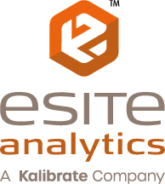Why would one wholesale club leak profits while a competitor does just fine? And how do relatively small chains like The Container Store maintain sales growth in the midst of tough economic times?
The answer is easy: Successful brands deeply understand, and dominate, their local store markets. With the right tools, technologies and analysis, so can yours. The key is spatial data. Here are three ways this specialized branch of predictive analytics can be used to optimize your network and improves store sales:
1. Evaluate local marketing.
A relatively easy, quick method for increasing existing store sales is to take a second look at your spatial data and refocus advertising budgets. You may discover the wrong neighborhoods were being targeted all along and uncover more promising methods and locations for promoting local stores.
2. Look beyond the demographics of people who live nearby.
At what days and times is traffic heaviest? Are there a lot of commuters? You need to know more than who lives near your store; find out who’s geographically nearby, too. A good site selection tool can help provide these answers as well as many others.
3. Build better trade areas.
There are very few brands, like Ikea, that can create their own draw. For 99% of retail stores, roads aren’t typically built, highway exit signs don’t go up and trade areas aren’t going to change because you’ve chosen a particular site. Instead, your franchisees or managers must be equipped with a deep understanding of existing demographics and driving patterns. Accurate trade areas help take the guesswork out of store design, merchandise mix and more.
Wondering how else you can optimize your existing store networks?
Find out if you’ve been making the three most common trade area mistakes in our latest white paper. Fill out the form below to download eSite’s free trade areas white paper.
[pardot-form height=”300″ id=”4300″ title=”Trade Area White Paper Download”]
